Aquaponics is a combination of hydroponics and aqua-culture. It is a closed-loop system that uses aquariums (or aquaria if we’re going to use proper Latin) of fish to produce the nutrient fertilizer for plants to feed upon. The plants then grow in the water that is infused with fish droppings (and filtered for solids). It uses no soil. The water recycles back through the system to the fish and the whole process starts all over again.
I paid a visit to EVO Farm (now it is called Ourfoods), a local experimental site that combines yardsharing with aquaponics. The creators of EVO Farm didn’t have their own space to experiment, so they found a neighbor with extra space in their yard who was excited about the idea of picking fresh produce from a garden they didn’t have to tend themselves. Yay for yardsharing!
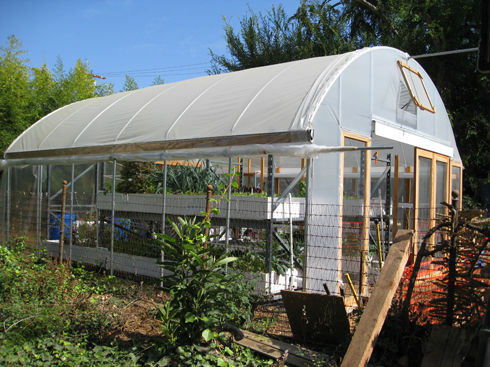
Thank god for double lots. These two-tiered garden “beds” are snuggled under
a greenhouse for a more controlled environment.
We met with David Rosenstein, one of the three founders of EVO Farm/Ourfoods, who took us on a tour around the farm.
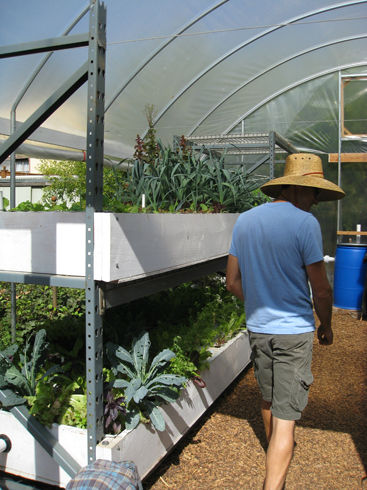
David Rosenstein shows us the ropes
The “beds” are filled with water rather than soil, and CFC-free foam with holes for each plant floats on top of the water, holding the plants in place on the surface. David lifted a flat of foam to show hundreds of vibrant white roots sprawling happily down into the water below.
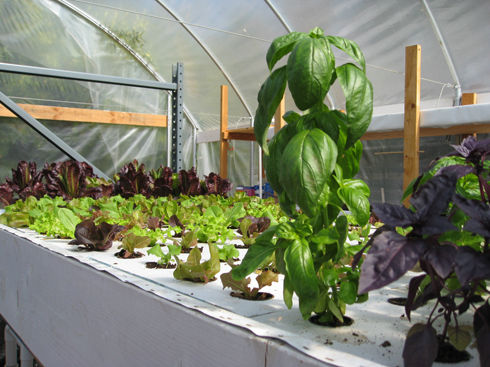
Recently planting top bed of plants in foam. The holes are filled with coir (coconut fiber growing media). The turn around time from transplant to harvest is faster than in the ground.
But wait–I’m getting ahead of myself. The whole thing starts with the fish. David lifted the plywood top off a giant dairy container (think enormous milk jug with the top cut off), which held several dozen tilapia and goldfish.
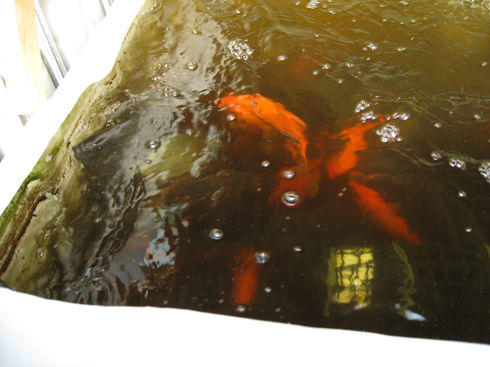
Along with beneficial algae and bacterial inputs, the tilapia are fed fish food
that has been researched for purity. So far, there’s no such thing as organic fish,
but they hope to change this at EVO Farm/Ourfoods.
The water goes through two filters (also being housed in food-grade drums) where the bacteria can colonize on some shredded PVC… heck, why summarize when I can quote the EVO Farm website:
“Beneficial bacteria live in the water that feed on ammonia and convert
it from nitrites to nitrates. Nitrates are a direct food source for
plants…i.e. liquid fertilizer!”

Shredded PVC acts like a coral reef for bacteria to colonize.
So the result is this amazingly fast, healthy growth of plants without soil:
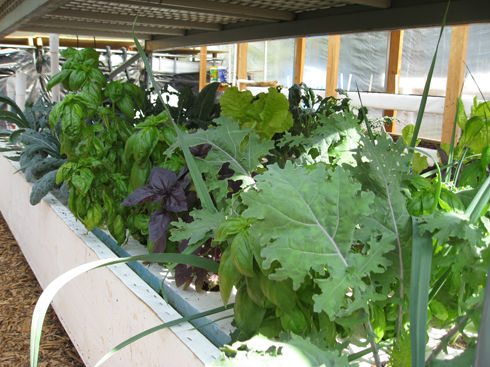
The lower tier of plants are mainly cool weather crops, since they get less sunlight than their neighbors upstairs. There is enough reflected light, however to keep them vibrant and strong.
The Farm has a steady supply of new plants in the nursery, which is a three-tiered shelf unit lined with waterproof material. The farmers flood the deep shelves with the same water that cycles through the Farm.
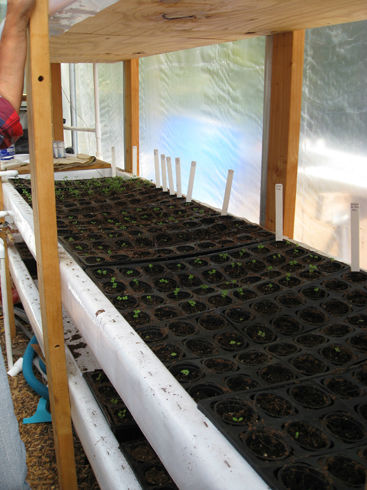
This is just the beginning for EVO Farm. The founders have big plans for expansion, and the goal is to produce enough vegetables for a CSA (community supported agriculture) that launches this fall. They also plan to harvest the fish (it will be organic, of course), and utilize the compost bins outside the greenhouse to provide heat for the building and water system during winter.
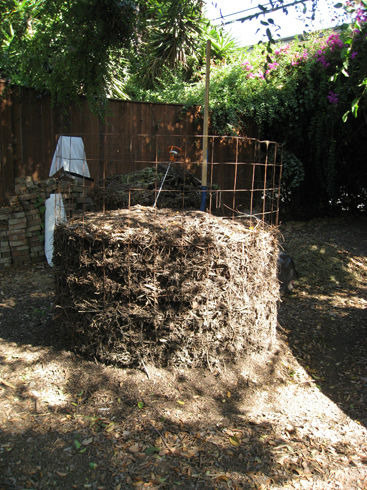
In order to set up the greenhouse, some existing landscaping had to be cleared. It has all been composted for later use.
Check out the Ourfoods website for more details about how aquaponics works.

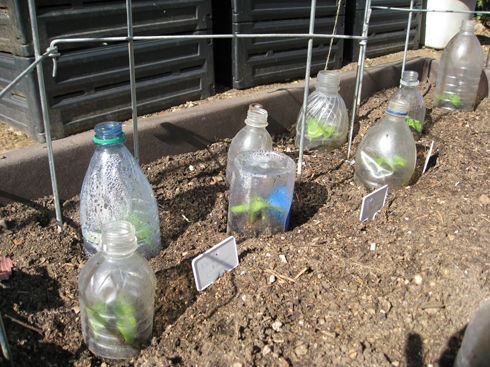
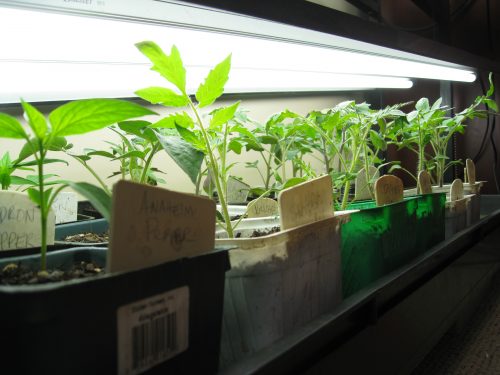
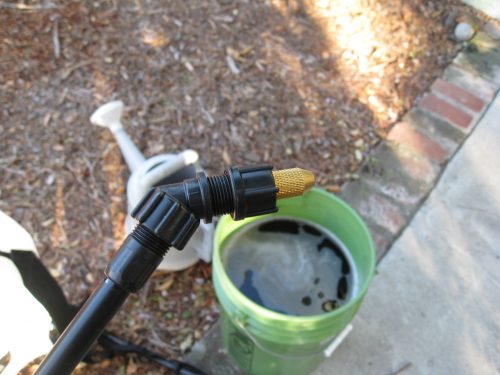
This is one of the nicest aquaponics setups I’ve seen. I hope mine can be half as nice as this.
According to their website, you can contact them at info[at]evofarm[dot]com
Hi Christy,
I’d also like to visit EVO Farm, as I am very interested in aquaponics and studied it in school before. How can I contact them? I am a permaculture person too.
Towards sustainability,
Best,
Dennis